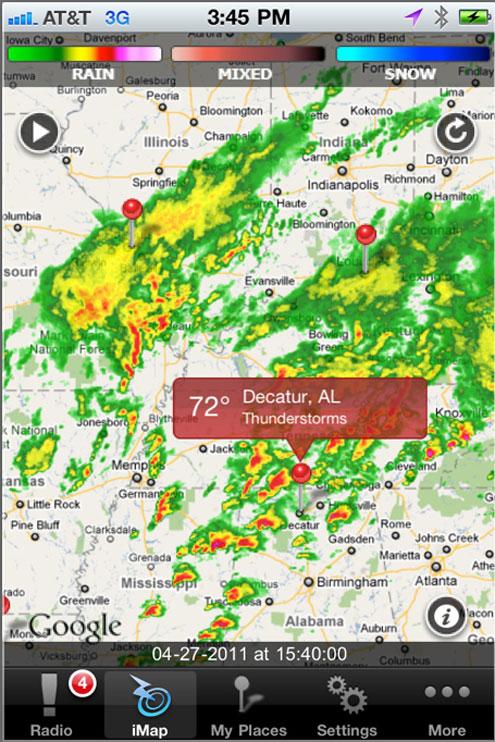 Severe weather is a leading concern among residents of Tuscaloosa and its surrounding areas, and in a world powered by smartphones and tablets, many people have begun to use apps to keep a lookout for dangerous storms. The rush for these tools, though, has left many consumers asking which apps are most trustworthy.
Severe weather is a leading concern among residents of Tuscaloosa and its surrounding areas, and in a world powered by smartphones and tablets, many people have begun to use apps to keep a lookout for dangerous storms. The rush for these tools, though, has left many consumers asking which apps are most trustworthy.
James Spann, Chief Meteorologist for ABC 33/40; James Dice, Chief Meteorologist for WBRC; and Richard Scott, Chief Meteorologist for WVUA have all offered advice on weather apps and other tools that they have found to be reliable.
“My best word of advice is to have NOAA Weather Radio for your home,” Scott said. “You want the type that’s programmable county by county. In fact, a Midland NOAA Weather Radio is best in my opinion.”
Although it’s not officially affiliated with NOAA Weather Radio, a weather update app is provided by iTunes via the official NOAA NWS product data feed service for the iPhone, iPod Touch and iPad.
Spann recommended the iMap WeatherRadio app. The app is currently accessible on iPhones, and the Android version will be introduced in the spring.
“[iMap WeatherRadio] enables people to receive warnings based on GPS. If you are in a warning polygon, you get the message, and if you are not in the polygon, you aren’t bothered,” Spann said. “The app lets you choose the warnings for which the alarm sounds, and you can also program in fixed locations as well as your current GPS based location. And, on top of that, you can watch our live tornado coverage within the app. Works like a charm.”
Dice agreed with Spann on the iMap WeatherRadio app, but also recommended the free Fox 6 Weather app. The Fox 6 Weather app, which uses GPS to send updates based on the phone’s location, is available on the iPhone, iPod Touch and Android. The app also allows users to send in photos and videos to Fox 6 News.
In the event severe weather, Dice recommends that people should be prepared and rely on the lessons learned in last year’s tornado disaster.
“We encourage people to rely on mobile phones and weather radios for their tornado warnings and not sirens,” Dice said. “If you’re in the path of a tornado, you need to take action immediately and, hopefully, follow the severe weather plan you’ve put together before the event. We cannot stress enough to get as many walls between you and the outside as possible. Interior rooms and interior rooms in basements are the best places. We also learned from April 27 [that] a bike helmet or some sort of helmet can provide lifesaving protection.”
Scott also offered advice for preparing for tornadoes and further elaborating on the importance of planning ahead.
“When a tornado warning is issued, you want to get in the lowest possible spot in your home or apartment and in a room away from windows. The center part of your house is safer because there are more walls between you and the outside to protect you from the wind and debris,” Scott said. “All you have to do is plan ahead. Plan exactly where you are going to go and what you’re going to do if a tornado comes our way. Planning ahead can save your life. The last thing you want to do is try to decide what to do when a tornado is about to strike”









